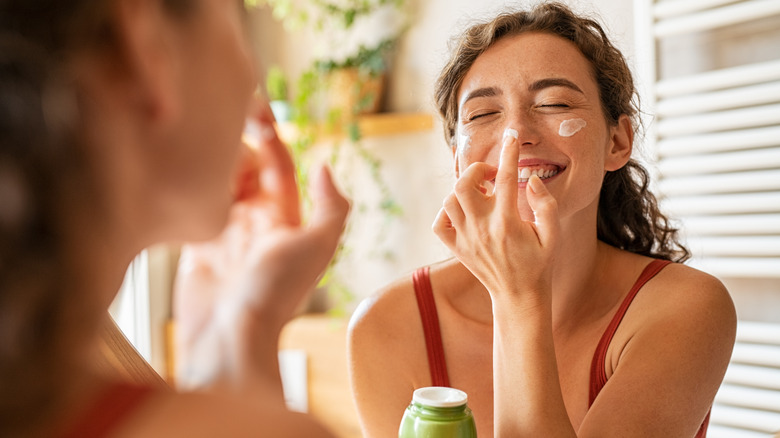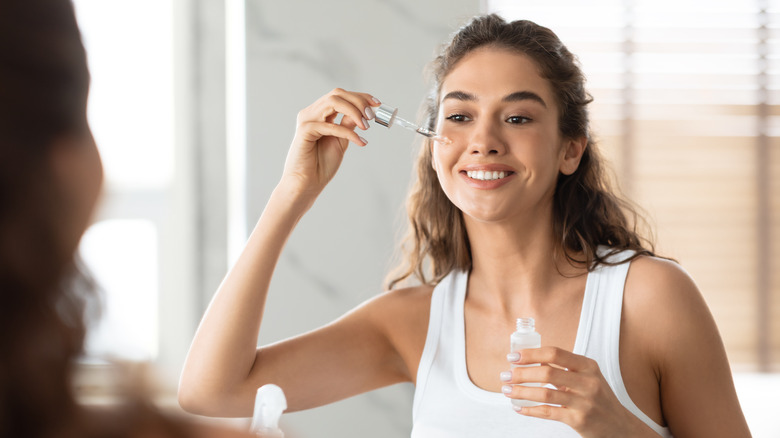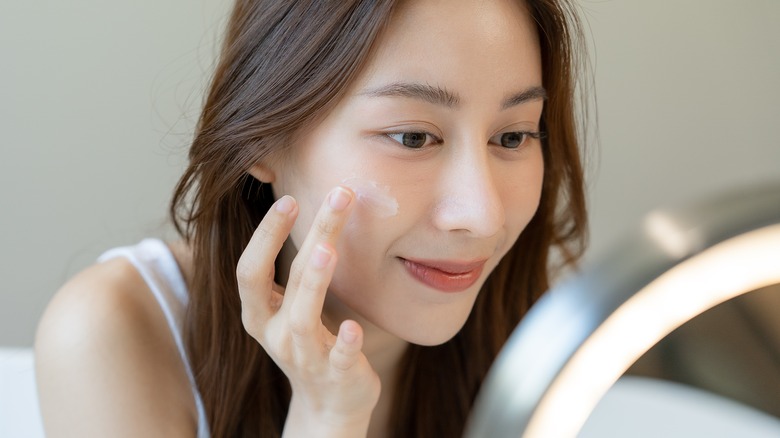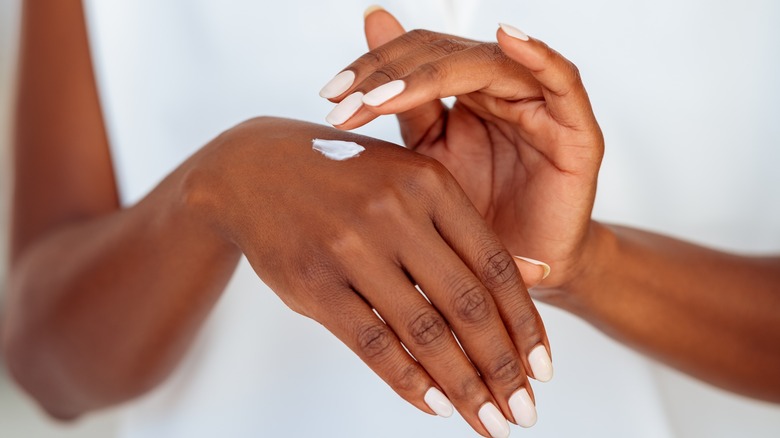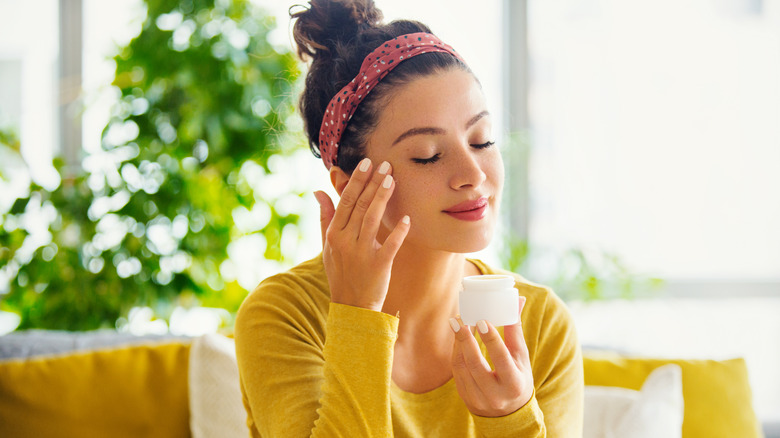Spilanthol: What To Know About The Skincare Ingredient
We can all agree that the secret to great skin is all about what you put on it. This means doing the proper research and knowing your ingredients instead of blinding layering on skin care product after skin care product. On that note, we're here to introduce you to a power ingredient you might not have heard of. Enter spilanthol. According to a 2016 study in The Brazilian Journal of Pharmacognosy, spilanthol is a substance found in a variety of plant species and is used around the globe for various remedies. Its analgesic, neuroprotective, antioxidant, antimutagenic, anti-cancer, anti-inflammatory, and antimicrobial properties make it an unavoidable commodity in skincare and pharmacology.
Spilanthol is an underrated magic ingredient and possibly just what your skincare routine lacks. But what does it do for the human skin, and is it any good? Can you use it, and if so, how? We've got the answers to all these questions and more.
What is it?
Researchers of the 2016 study note that spilanthol can be found in plants such as Heliopsis longipes and the genus Acmella. In skin care terms, put simply, the plant-based ingredient spilanthol works as a muscle relaxer, meaning it can have the same effect as Botox! It might seem hard to believe, but the facts don't lie. This means you can also have smooth, wrinkle-free skin without going under the needle. Gaining the benefits of this super ingredient is all about how you use it. If you know how to use it effectively, great skin is just around the corner for you.
We understand today's market is saturated with all sorts of products for your skin, making grand claims and promising the best results. This is why it's more important than ever to know your stuff so you can pick the best ingredients and make them work for you. Fortunately, extensive research supports spilanthol and its great work.
What can it do for you?
Dr. Ana Mansouri, a medically qualified skin and aesthetic expert who spoke to Refinery29, remarked, "Studies have shown that Spilanthol can block allergic inflammation in skin concerns like atopic dermatitis." So if you suffer from such a skin condition, this ingredient can help relieve some of the symptoms. Dr. Mansouri also states, "Secondly, spilanthol has also shown skin penetration benefits where it can increase the absorption of other topical substances applied on the skin." This makes spilanthol an excellent base for your other skin care products, penetrating your skin more effectively and working better for you.
Additionally, Dr. Mansouri also talks about the Botox-life effect we previously mentioned, noting that "one study has suggested that it may have a blocking effect on the muscles in the face. This suggests it may be used to reduce muscle movements, thereby softening wrinkles". She says this is why spilanthol is often referred to as "organic Botox."
How to use spilanthol
So, how exactly do you use it to gain all the benefits for your skin? We recommend you sweep the market for skincare products such as oils, serums, or creams that contain spilanthol on their ingredient list. Make sure you use these products in conjunction with sun protection to gain all of their benefits.
However, this does not mean you should rely solely on spilanthol to care for your skin. Every skincare ingredient needs to be supported by other elements to work best. Your spilanthol use should supplement an already existing skincare routine that works for you to optimize its effects. Additionally, make sure you commit to the skincare routine you have built for yourself to see good results. It is critical to give your skin care products time to get used to your skin and work their magic. And this logic applies to spilanthol, too. So, go into it with patience and a willingness to commit to a routine.
Is there a downside?
Last but not least, are there any cons to spilanthol? Speaking to Refinery29, Dr. Ana Mansouri explains that no side effects or notable downsides have been observed with spilanthol thus far. She does, however, recommend that you "take care to check what other ingredients have been included in the formulation you choose, as these may have the potential of their own side effects." She also makes a noteworthy point about spilanthol's increased absorption of other ingredients. She says that "for potentially irritating, active ingredients such as AHAs (alpha hydroxy acids with exfoliating properties, like glycolic or lactic acid) or retinoids, I'd suggest particularly sensitive or reactive skin types use them on separate occasions from Spilanthol to prevent any reactions."
As with any ingredient or product, you should also conduct a patch test before using a new product. That way, you can make sure your skin, with its unique composition, will not react negatively to the new product in your routine.
Adding new products to your routine
Adding a new product to your skincare routine, one that contains spilanthol or not, has to be carried out with care. Apart from undertaking a patch test, there are also other tips that you must take, both for safety and good results. Skincare experts say adding only one product at a time and waiting for a month before introducing anything else is advisable.
Further, skin educator Glenise Gomez told Heyday, "it doesn't make any sense to invest in a routine if you're not protecting against UV degeneration and free radical damage," emphasizing the importance of everyday UV protection for your skin. Every other skin care step you take will be useless if you're not protecting your skin from the sun and its rays. So, ensure you don't forget this small but important step in your skincare routine.
